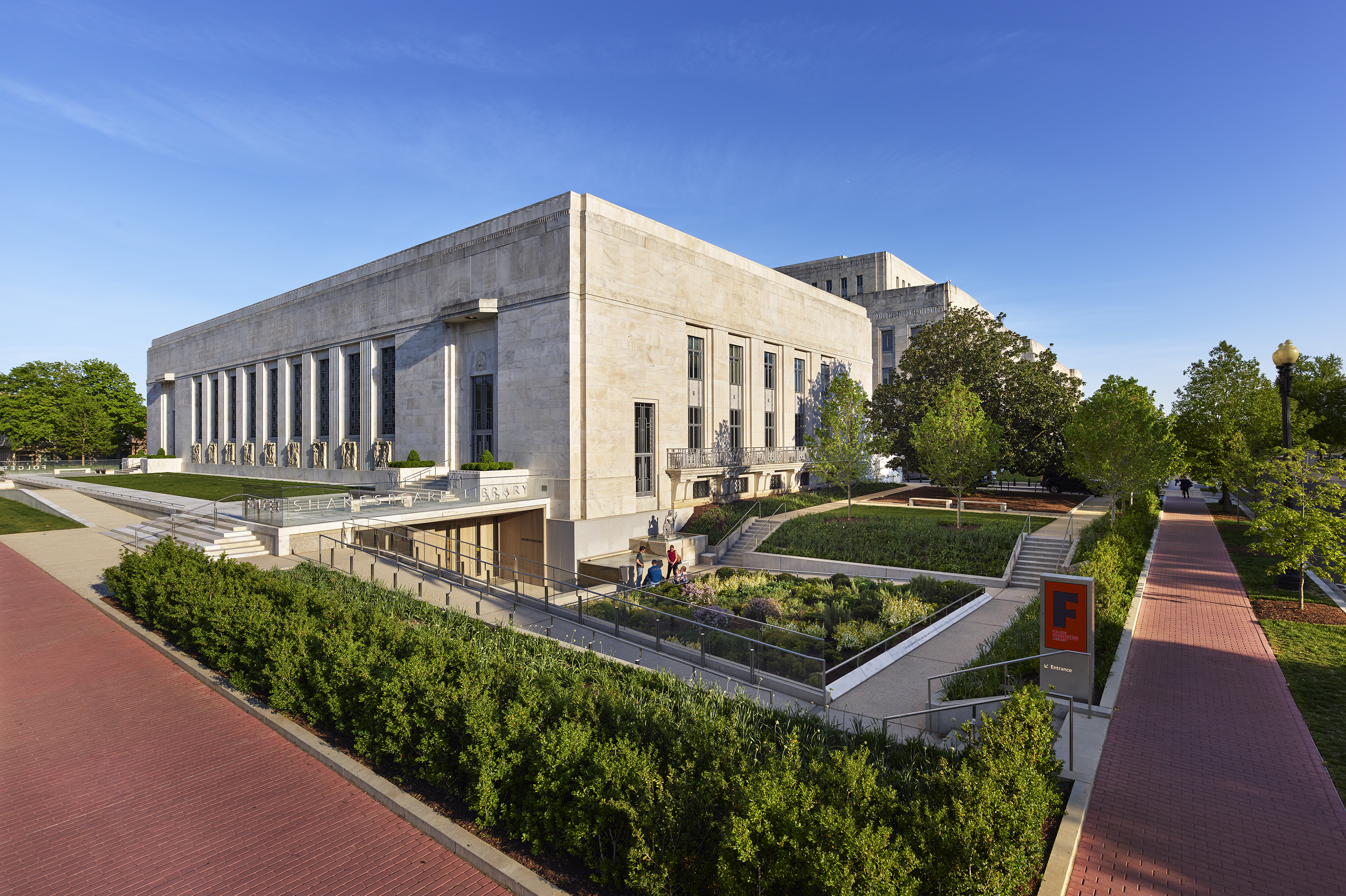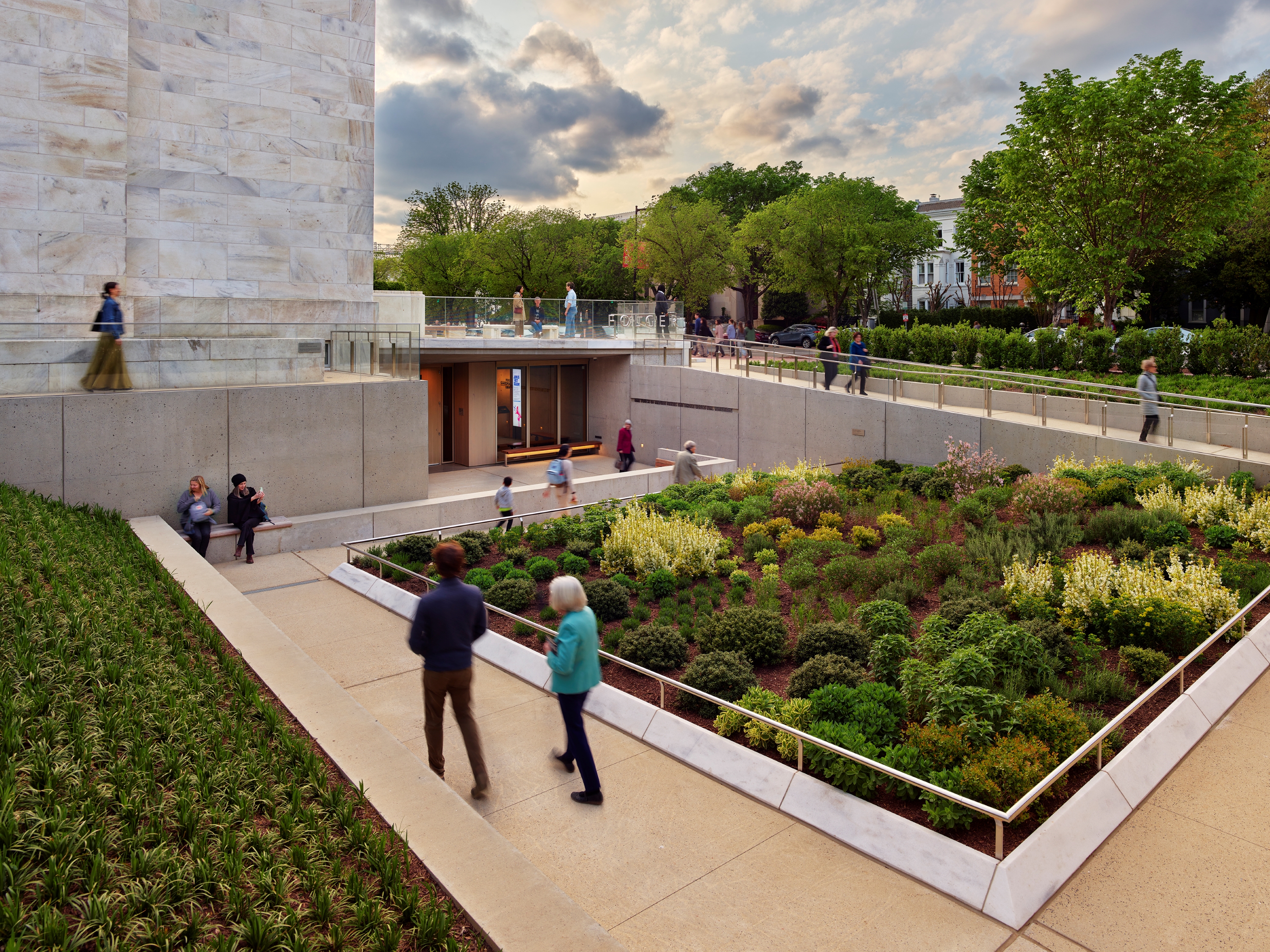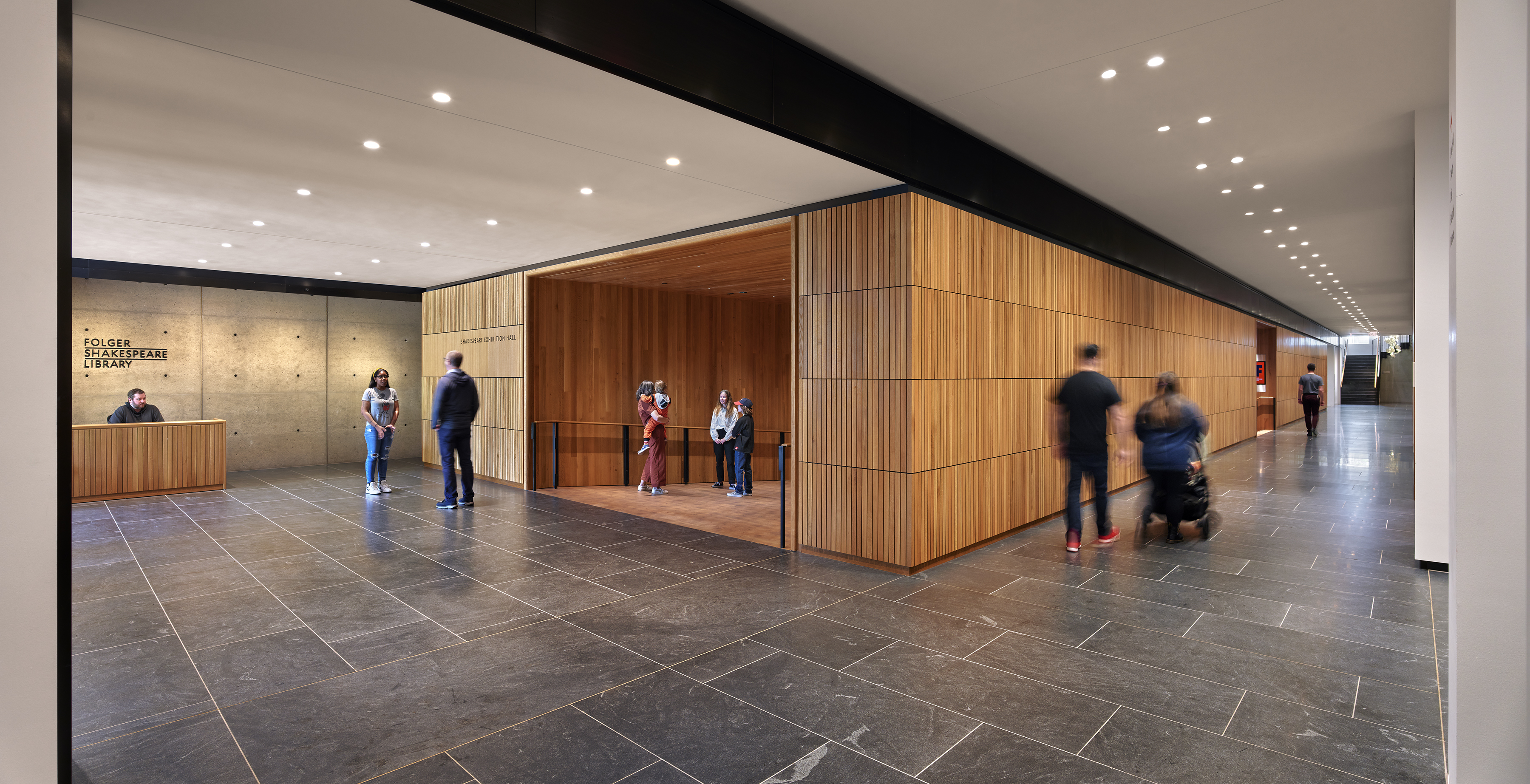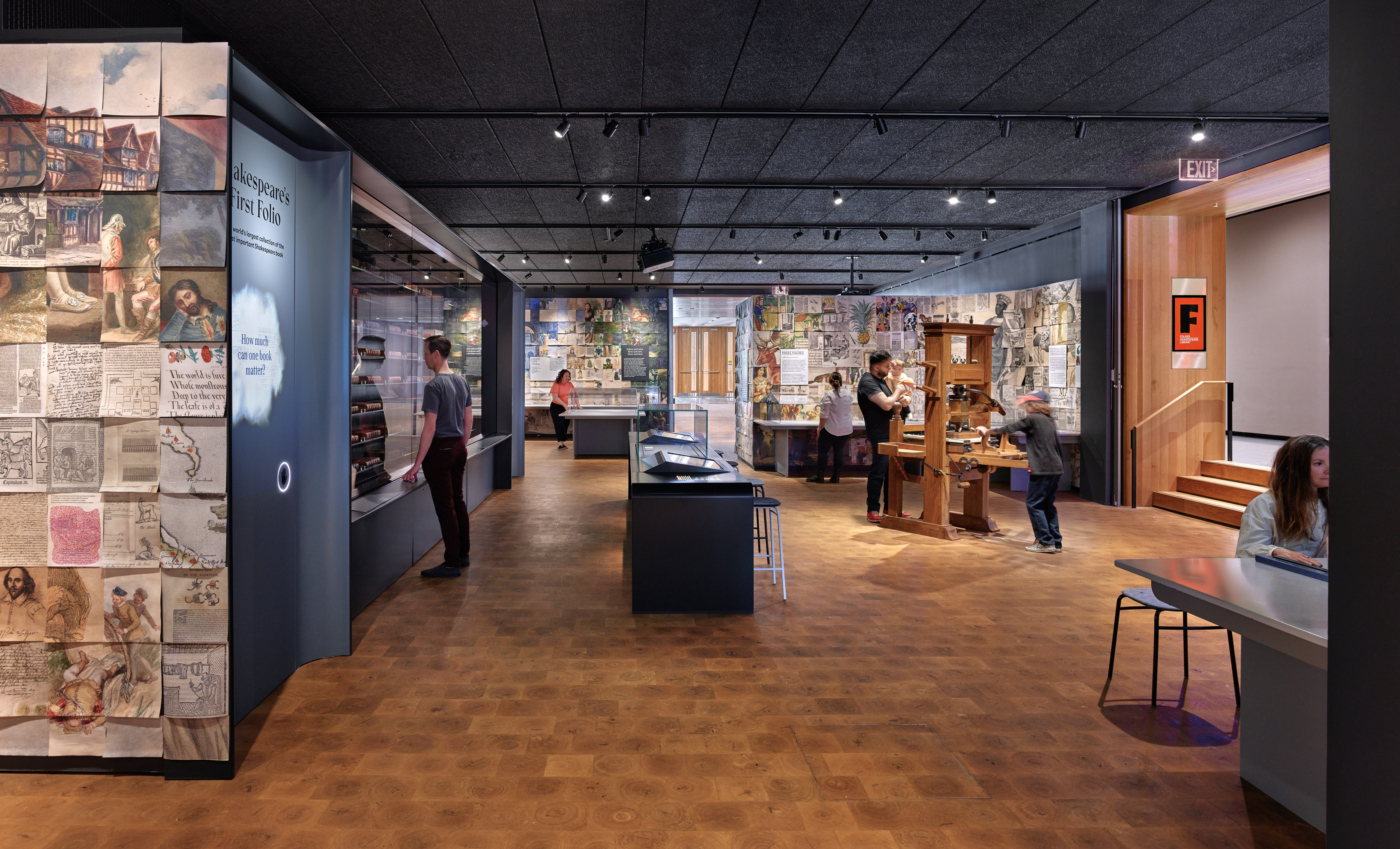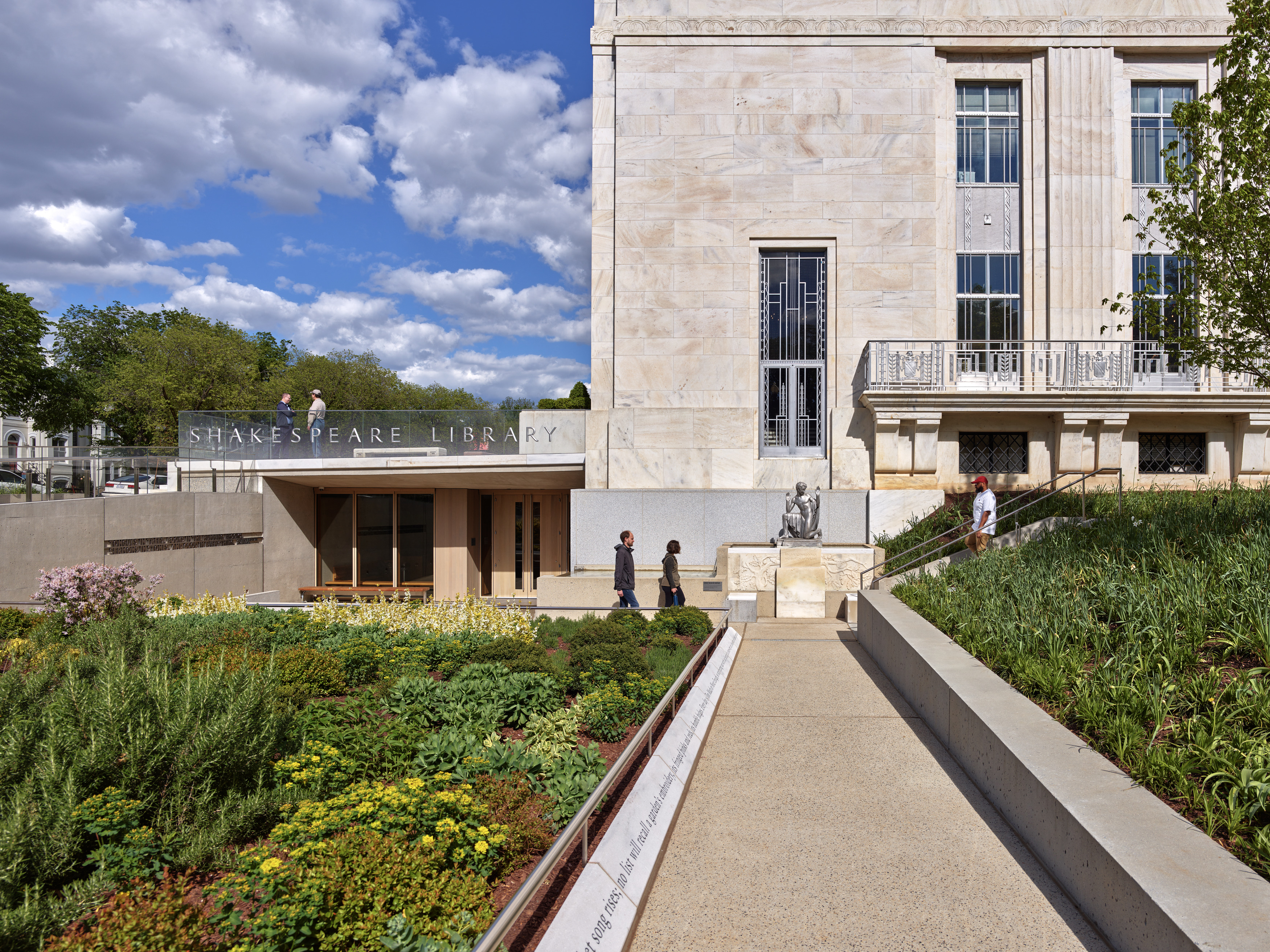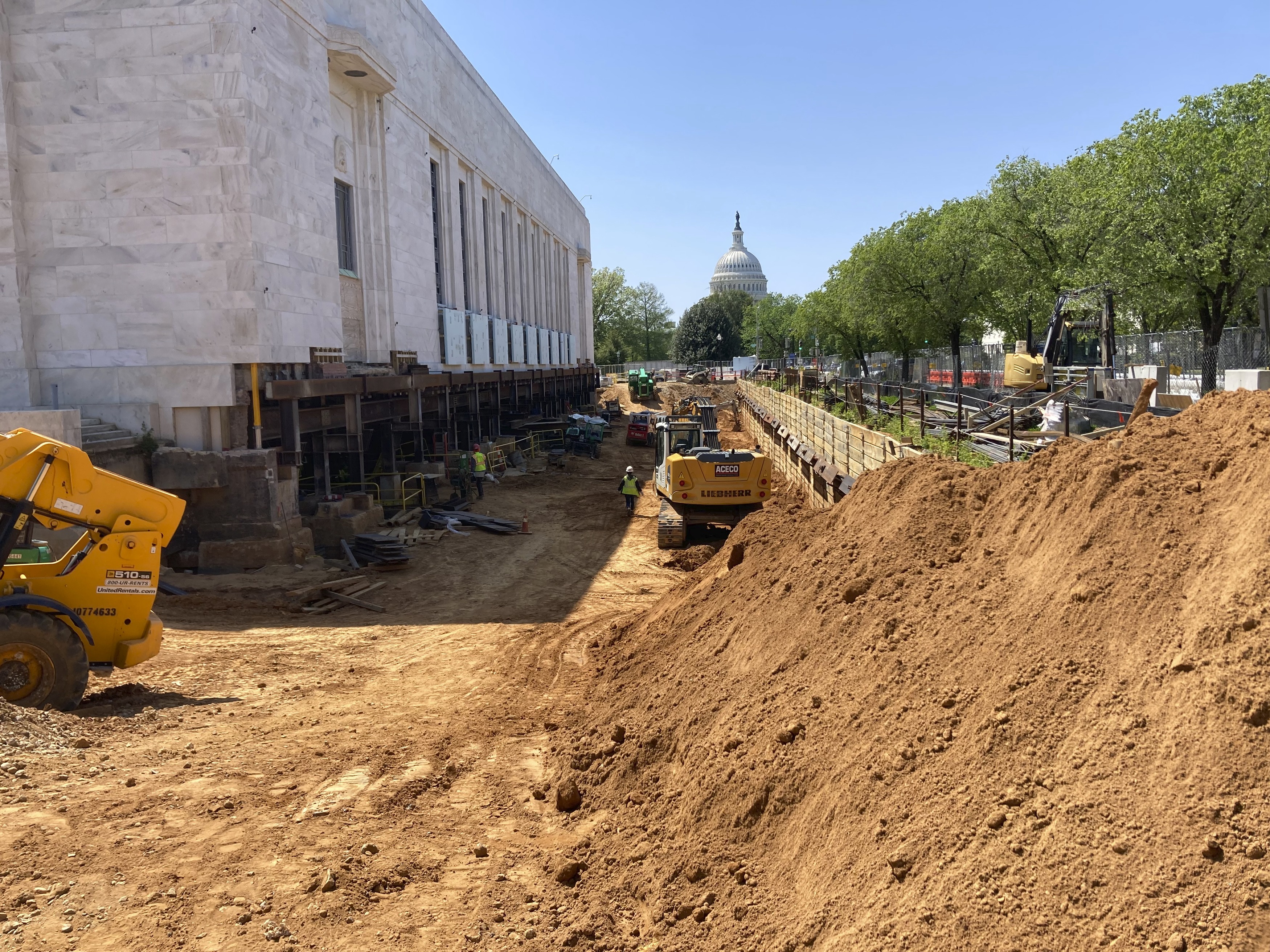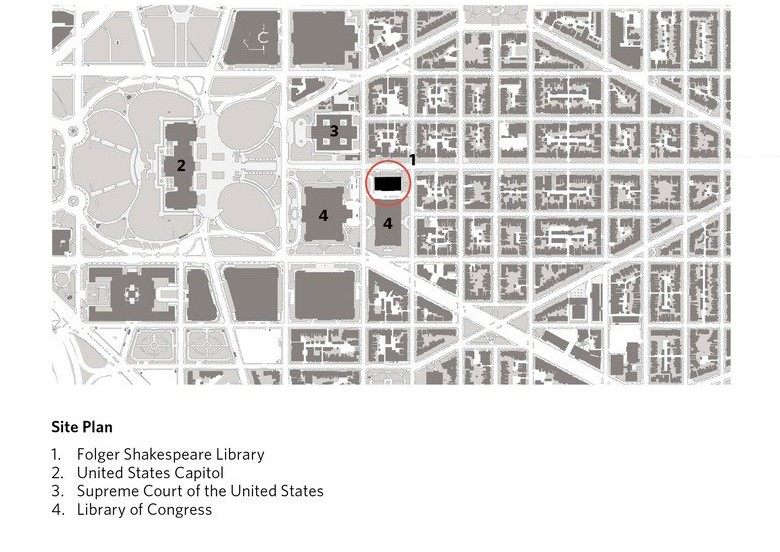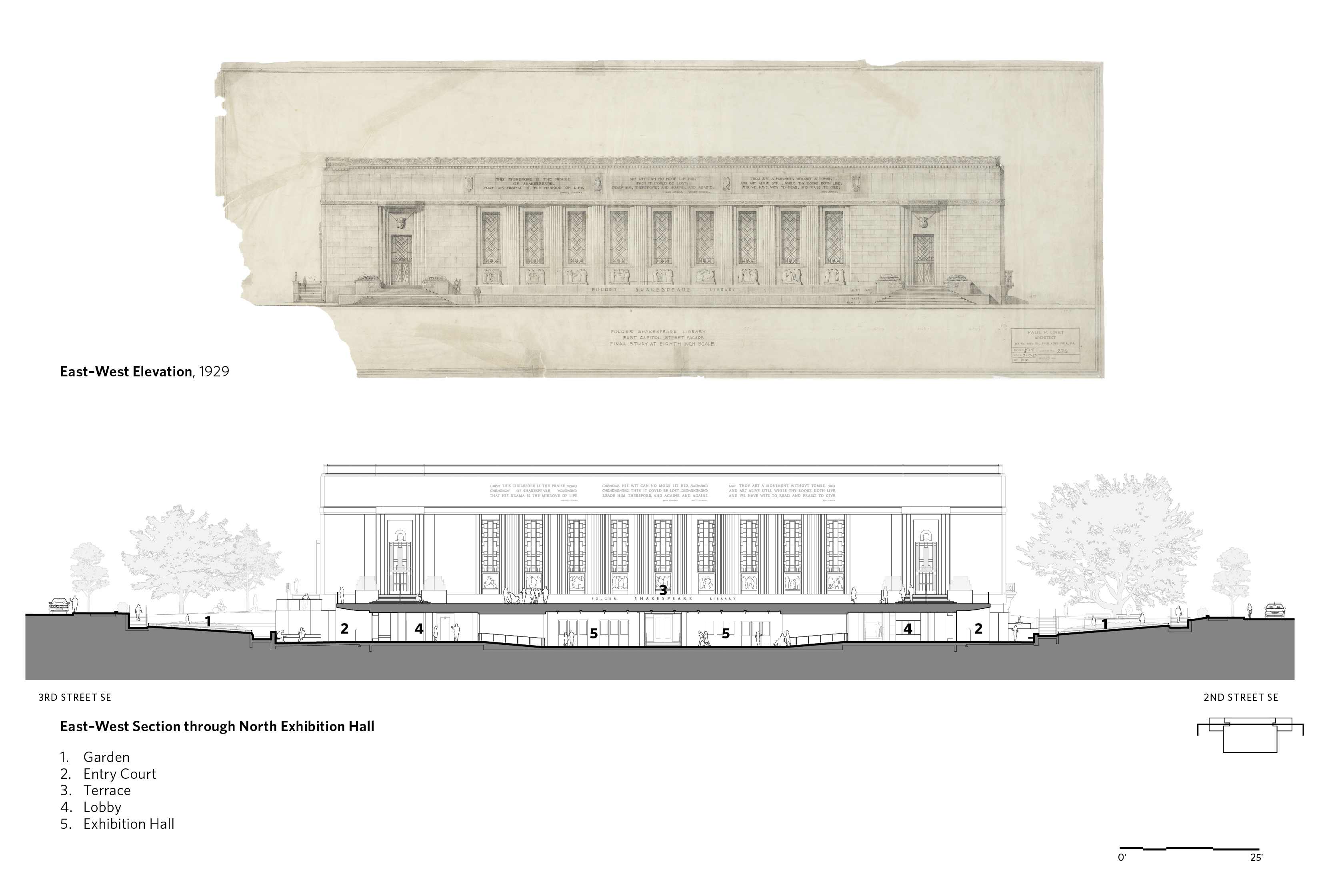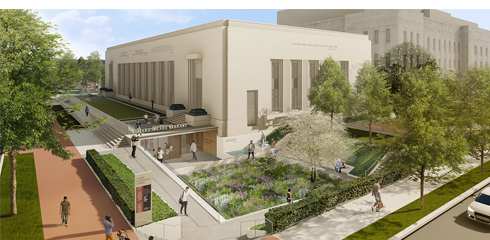How can a 20th century cultural institution be more welcoming and accessible to 21st century audiences?
13,740 cubic yards of earth were excavated for new programming and the existing steel frame was transferred and resupported on new foundations. The self-bearing marble facade was temporarily supported through construction until the new addition was complete.
The renewal and expansion of the Folger Shakespeare Library is the result of more than 10 years of planning to make the institution a more inclusive, experiential, and welcoming place. The design responds to a commitment to expand the audience, relevance, and future of the Folger.
In addition to the café, galleries, and public space, the project also includes new collaborative research spaces, Reading Room furnishings, HVAC and accessibility improvements in the theatre, and updates to the collection storage system.
Its location on East Capitol Street is adjacent to the Library of Congress and diagonally opposite the Supreme Court. It straddles the edge of the federal district and it abuts Capitol Hill residential neighborhoods. KieranTimberlake provided Master Planning, Programming, Design and construction administration services.
The Folger is adjacent to the Library of Congress and diagonally opposite the Supreme Court, straddling the edge of the federal district and Capitol Hill residential neighborhoods.
Built in 1932 and designed by Paul Philippe Cret, the original building was principally a research library and a repository for works by and about Shakespeare. The new space is simultaneously deferential and transformational. It honors the past while increasing access for new audiences.
The breadth and difficulty of expanding the new program beneath a building on the National Register of Historic Places cannot be understated. Unlike a typical construction process where the building starts from the ground up, a new building was added underneath the existing historic site. Approval by adjoining neighborhoods, the District of Columbia, and federal authorities was required.
The existing building was designed by Paul Philippe Cret and opened in 1932. Over time, it created limitations in accessibility and equity, compromising the Folger's mission to reach broader audiences.
The below-grade addition, beneath the historic terrace at the front of the building, is entered through tapestry gardens, providing both quiet and reflection as the visitor moves from the city into a previously hidden world, now revealed to all.
The addition offers opportunities for light and views to nature, while acting as transition spaces to the dimly lit galleries. The generous lobbies, gift shop, gender-neutral bathrooms, and gracious circulation are an invitation to visitors of all ages, backgrounds, and mobility.
Anke Neumann's 15-foot-tall hanging sculpture "Cloud of Imagination" lights the east stair and unifies the historic and contemporary spaces. It is one of three works commissioned to reflect the Folger's mission and complement the building's transformation.
© Alan Karchmer / OTTO
Opportunities for larger exhibitions were previously constrained by space and conditions. The re-imagined building places much of the Folger's one-of-a-kind works on display to the public for the first time, including the world's largest collection of Shakespeare's First Folio.
Interventions to better connect previously inaccessible spaces were minimal and in dialogue with the historic interiors. For example, the new east stair portal frames a former box office window while an elevator core was fit into proportions of a former coat check.
As a part of the renewal, three artists were commissioned to create works that reflect Folger's mission and offer visitors creative entry points through which to consider Shakespeare and the early modern world. Included among these is a poem written by US Poet Laureate (1993-1995) and Pulitzer Prize-winner Rita Dove, now inscribed upon the garden wall along the path that leads visitors to the Folger's new west entrance from East Capitol and 2nd St.



